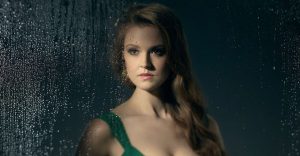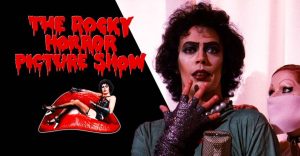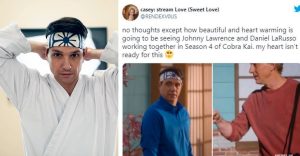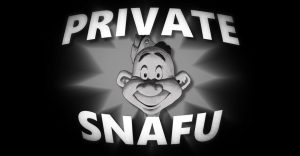Batman V Superman Came Out 6 Years Ago: Why It’s Still So Controversial

When it comes to Hollywood superhero tentpole movie drama, it doesn’t get much more controversial than Batman v Superman: Dawn of Justice, even six years since its release. While other major franchises have concluded major arcs and moved on to new eras of storytelling, the DCEU still hasn’t quite found a new stride, and Batman v Superman often finds itself at the center of the debate over Warner Bros. approach to DC Films, what went wrong, and their plans for the future.
The MCU released the first Avengers movie in 2012, forever changing the landscape for comic book movies and shared universes, just a year before the release of Zack Snyder’s Man of Steel. The new take on Superman was largely seen as a success at the time, but its divisive approach was a sharp contrast to the near-universal praise of Marvel’s rapidly expanding shared universe, setting expectations for what Warner Bros. needed to do with its plans for a DC superhero team-up, putting all eyes on Man of Steel‘s sequel, Batman v Superman: Dawn of Justice. The movie was bringing two of the most iconic characters, Batman and Superman, together on the big screen for the first time, while also introducing Wonder Woman and laying the seeds for Justice League with hopes of a big shared universe full of DC characters to match Marvel’s success.
While Zack Snyder’s 5-part plan for his DCEU movies, culminating in a Justice League trilogy (although that plan wasn’t made clear at the time) was set to check off a lot of those expectations, the weight of “catching up to Marvel” was thick in every conversation about what Batman v Superman needed to accomplish; however, before it finally arrived on March 25, 2016, the narrative had already been set thanks to the reveal of its abysmal 28 percent Rotten Tomatoes score and lingering contention over Snyder’s approach to Superman in Man of Steel. It may seem like a century ago considering the drama surrounding Snyder’s departure from Justice League, the Release the Snyder Cut campaign that followed its November 2017 release, and the eventual release of Zack Snyder’s Justice League in March 2021, but in the six years since Batman v Superman hit theaters, it remains one of the most controversial blockbuster films of all time.
Zack Snyder Broke Batman and Superman (On Purpose)

Much has been said, and much will be said in the future, about what supposedly went wrong with Batman v Superman: Dawn of Justice, so it’s impossible to recount every way it’s triggered massive debates over the years and why people are still arguing about it six years later in 2022, but to distill it down to a single, core issue, Zack Snyder decided to tell a story that purposefully broke both Batman and Superman, and nobody can agree on whether or not the story justifies that decision (if they even realize it was a conscious decision), or whether or not that’s a story that should even be the basis for the first cinematic meetup between the Caped Crusader and the Man of Tomorrow.
From Snyder’s perspective as an auteur director with a tendency to approach stories from a deconstructionist perspective, massive cultural icons like Batman and Superman are icons for a reason, and in order to show why and how, he told a story that brought the core trait’s of each character into conflict to ask “what makes Superman Superman” and “what makes Batman Batman?” In order to answer that question, you have to take the most iconic attributes of each character, Superman’s ability to be a symbol of hope against all odds and Batman’s devotion to justice against all odds, and ask what it would take to break those attributes, and, if they could be broke, what would it take to put them back together?
Batman v Superman: Dawn of Justice answers that question by taking Batman’s loss and fear of feeling powerless, a fear traumatically instilled in him as a child with the murder of his parents, and Superman’s desire to save everyone, even when society rejects him, and sending them on a collision course. Of course, that means Superman doesn’t spend the entirety of Batman v Superman being the symbol of hope audiences expect, and Batman has become a rage-fueled engine of destruction convinced the elimination of a perceived threat (Superman) at any cost is justifiable. Those conflicting philosophies come to a head with the notorious realization that their mothers share the name Martha, which snaps Batman out of his rage enough to see he’s become the very kind of killer he set out to stop. Likewise, Superman, despite feeling rejected by much of the world, gives up his life to save it, serving as the beacon of hope to finally rally people, including Batman (and consequently, the rest of the Justice League) behind his symbol.
There are additional ancillary arguments over tone, dialogue, pacing, casting, characterization, the concept (and execution of) the “Martha Moment” and any other number of issues that will likely continue to be debated ad infinitum, and if any of the articles or YouTube videos made on the topic haven’t settled the issue by now, this one won’t either, so this isn’t to argue the success or failure of that choice, other than to point out the controversy itself is primarily over whether or not any story could justify the breaking of such cultural icons. Unfortunately, the continuation of that story in Zack Snyder’s original Justice League, wouldn’t come for a few years, depriving audiences of the proof they needed that there was a reason behind all of this or that these characters would eventually reach the iconic characterizations everyone knows from decades of classic stories.
DC Films Still Haven’t Recovered From Batman v Superman

Because audiences expected the DCEU to follow a similar trajectory to the MCU featuring dozens of movies over the course of several decades, a narrative Warner Bros. leaned into, despite Zack Snyder envisioning his story as akin to a limited run Elseworlds story, the decision to break these characters early on was seen as a mistake by many of its critics. Unfortunately, Warner Bros. seemingly confirmed that perception by its attempt to totally retool the sequel, Justice League, into a drastically different story, jettisoning plans for additional sequels and delaying or canceling other planned spin-offs like The Flash, Cyborg, and more.
While multiple Warner Bros. administrations promised a new plan and a fresh direction for the franchise, DC Films has failed to get any sort of alternate Justice League story or equivalent multi-film arc off the ground. Aquaman, written as a direct follow-up to Snyder’s version of Justice League, made a billion dollars at the box office, but since then the franchise’s biggest successes have been movies like Joker or The Batman, which exist outside of the DCEU without any similar shared-universe tie-in plan. There are plans for big movies, especially with Black Adam or The Flash, both of which are expected to introduce a host of new characters and alter the course of the DCEU, but repeated delays and multiple reported changes to the stories over the course of development keep those movies both as massive question marks in the future of DC Films.
In the absence of the introduction of any new major arcs or team-ups on the scale of Batman v Superman or Justice League, including a doubtful future for both Henry Cavill’s Superman and Ben Affleck’s Batman, Batman v Superman has remained in the spotlight the entire time, blamed as the cause of these problems by some, with others desiring a proper continuation for those characters and stories. Complicating matters, the release of Zack Snyder’s Justice League was met with much more enthusiasm, finally introducing the versions of these characters disaffected audiences have been dying to see, going as far as to “redeem Batman v Superman” for many. The fact that Zack Snyder’s Justice League clearly sows the seeds for bigger follow-ups featuring the newly formed Justice League taking on Darkseid and the New Gods makes Warner Bros.’ vague plans for these characters seem unambitious by comparison.
How Perceptions of Batman v Superman Have Changed in 6 Years Since Its Release

While Batman v Superman: Dawn of Justice is still highly controversial, that perception has also softened a bit in the last six years. There’s certainly still debate over nearly every aspect of Batman v Superman and it’s the go-to punching bag or point of comparison used to contrast most new DC movie releases, although this fixture in the fiscourse has also established it as a bit of a de-facto benchmark for most new DC releases, a sort of victory of its own considering eight non-Snyder DC movies have come out in the six years since its release. If any of those movies had truly settled any sort of debate, there’d be no need for the continued comparisons, allowing DC Films to fully move on.
The release of the “Ultimate Edition” of Batman v Superman: Dawn of Justice (Zack Snyder’s director’s cut) in the months after Batman v Superman‘s theatrical release was the first big step in the softening of criticisms against the movie, as the 30 minutes of added story fixed many initial complaints and is virtually universally regarded as a superior version. In fact, the Ultimate Edition is currently the only version even available on HBO Max, branded simply as “Batman v Superman: Dawn of Justice,” dropping any specification that it’s not the theatrically released version, despite previously being labeled as such.
Of course, the release of Zack Snyder’s Justice League was the biggest boon to perceptions of Batman v Superman, as the story finally confirmed for many detractors that there was, indeed, a method to the madness and Superman and Batman were on a particular character arc bringing them in-line with their classic interpretations. It also helped that the nature of the marketing campaign for the Snyder Cut finally allowed Snyder’s story to be contextualized as its own separate story, freeing many detractors from the concern that its version of the characters were being set up for an MCU style arc covering dozens of films and allowing them to appreciate it as an Elseworlds story akin to some of the comics that inspired Batman v Superman such as The Dark Knight Returns.
Despite the set-up for a grand conclusion to Snyder’s story in Justice League 2 and 3 and continued campaigns to “Restore the Snyderverse,” Warner Bros. quickly established it has no intention to continue the story from Zack Snyder’s Justice League once the movie was released. As with Warner Bros. acquisition by AT&T and the launch of HBO Max, paving the way for the Snyder Cut’s release, the merger with Discovery could also shake things up in a way that paves the way for new opportunities for the Snyderverse, although with Snyder booked to multiple franchise commitments at Netflix, where he’s been vocal about how happy he is to work free from the kind of constraints he experienced at Warner Bros., it’s not totally clear what kinds of mountains would need to be moved for both him and Warner Bros. to reach a mutual agreement on what that looks like. If the stars do align and Snyder’s Justice League story is ever completed, Batman v Superman could finally have the kind of closure that allows the debate to end, but as things stand now, the lingering ellipsis on the Snyderverse will ensure Batman v Superman: Dawn of Justice retains its label as the movie that broke the DCEU, enshrining it with the permanent status as DC’s most controversial movie.
- Aquaman and the Lost Kingdom (2023)Release date: Mar 17, 2023
- Shazam! Fury of the Gods (2022)Release date: Dec 16, 2022
- The Flash (2023)Release date: Jun 23, 2023
- Batgirl (2022)Release date: Apr 11, 2022
About The Author


















